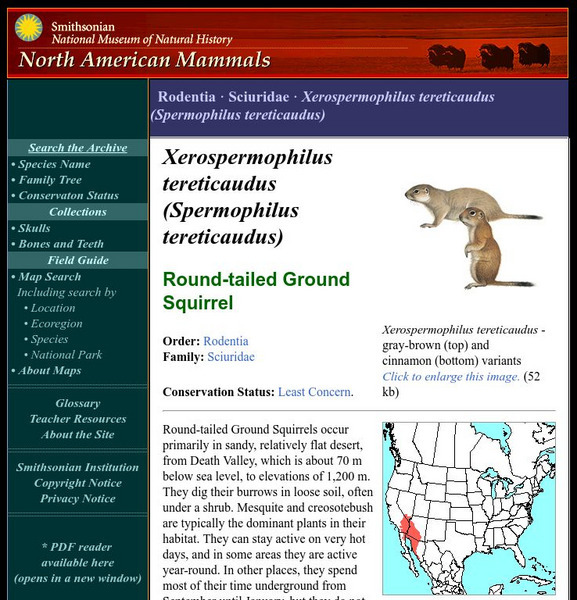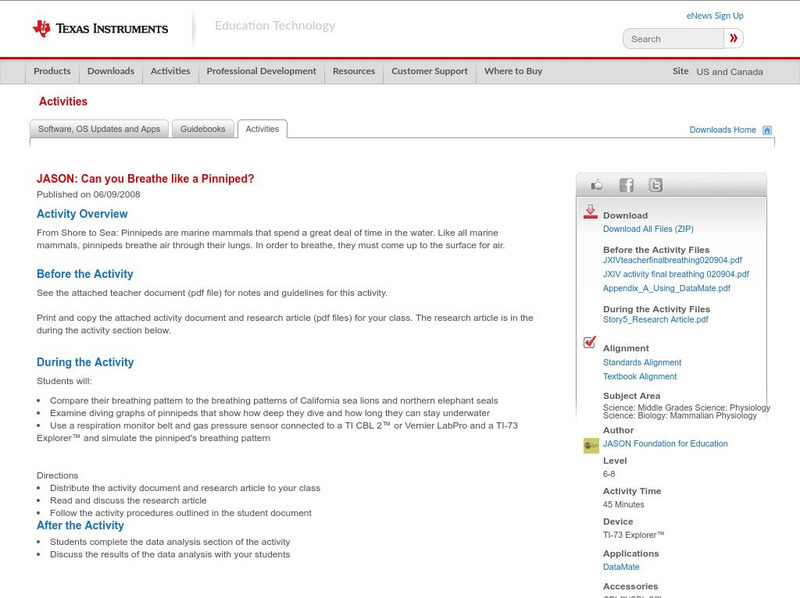Hi, what do you want to do?
Smithsonian Institution
National Museum of Natural History: American Mammals: San Diego Pocket Mouse
The San Diego Pocket Mouse occurs in desert and coastal habitats in southern California, Mexico, and northern Baja California, from sea level to at least 1,400 m. Yellowish or orange hair on its sides contrasts with a dark brown back,...
Smithsonian Institution
National Museum of Natural History: American Mammals: Desert Cottontail
Living well below sea level in Death Valley and also in woodland and grassland up to 2,000 m elevation, Desert Cottontails are able to tolerate diverse habitats. They are most active at dawn and dusk and spend hot days resting in a...
Smithsonian Institution
National Museum of Natural History: American Mammals: Round Tailed Ground Squirrel
Round-tailed Ground Squirrels occur primarily in sandy, relatively flat desert, from Death Valley, which is about 70 m below sea level, to elevations of 1,200 m. They dig their burrows in loose soil, often under a shrub. Learn more about...
Wikimedia
Wikipedia: Mustelidae
This Wikipedia encyclopedia article explores mustelids, a family of carnivorous mammals. Content includes a look at the range of species in this family, including a look at their common characteristics.
Texas Instruments
Texas Instruments: Jason: Can You Breathe Like a Pinniped?
From Shore to Sea: Pinnipeds are marine mammals that spend a great deal of time in the water. Like all marine mammals, pinnipeds breathe air through their lungs. In order to breathe, they must come up to the surface for air.
Texas Instruments
Texas Instruments: Jason: Pinniped Body Shape Conserving Warmth
From Shore to Sea: To survive in cold ocean environments an organism's body must be adapted to life under water. A body will cool very quickly when in contact with water. The body shape of an organism is one adaptation that helps to...
Canadian Wildlife Federation
Hinterland Who's Who: Killer Whale
Get the facts about the killer whale. Besides finding a detailed description of this highly social sea mammal, you'll also learn about some of its unique facts and characteristics. Also included in this Mammal Fact Sheet on the killer...
Smithsonian Institution
Smithsonian National Zoo: Meet Our Animals
This site from the National Zoological Park provides extensive information about many types of animals. Just click on the category you need. Includes pictures and live web cams.
Curated OER
Unesco: Japan: Shiretoko
Shiretoko Peninsula is located in the north-east of Hokkaido, the northernmost island of Japan. The site includes the land from the central part of the peninsula to its tip (Shiretoko Cape) and the surrounding marine area. It provides an...













